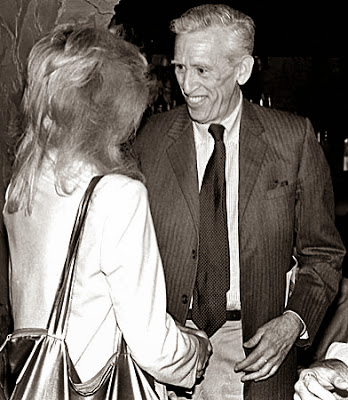J.D. Salinger: An enigma to the very end
By Deirdre
Donahue, USA TODAY
The reclusive
writer who gave literary voice to the emotional and psychological anguish of
teenagers throughout the world is gone.
J. D.
Salinger, 91, author of the 1951 masterpiece The Catcher in the Rye,
died Wednesday of natural causes at his home in Cornish, N.H., the author's
son, Matt Salinger, said in a statement from the author's literary
representative, Harold Ober Associates.
Catcher in the
Rye was the only Salinger novel released in his lifetime,
but it is an acknowledged masterpiece and established the author as one of the
most influential writers of the 20th century.
The novel
centered on an unhappy 16-year-old boy named Holden Caulfield. Expelled from
prep school, Caulfield narrates the story after an apparent mental breakdown.
The Catcher in
the Rye was the first to capture the post-World War II
alienation of youth: the idiomatic slang, the rage against the hypocrisy of the
adult world and the fury at the inevitable loss of innocence that growing up
demands.
Although the
book was published in the early 1950s, its themes foreshadowed the youthful
rebellion of the 1960s. There are more than 60 million copies of the 214-page
novel in print worldwide.
Jerome David
Salinger, born to a Jewish father and Irish mother on Jan. 1, 1919, grew up in
New York City. He attended boarding school and later New York University and Columbia.
The future
writer served in World War II as a soldier. His daughter, Margaret Salinger,
writing in Dream Catcher, a memoir about her painful childhood and
difficult relationship with her famous father, theorized that he may have been
traumatized by the war.
By the time
Margaret was born in 1956, Salinger had begun to retreat from the firestorm of
attention, praise, criticism and expectations The Catcher in the Rye
generated.
In the early
1960s, he published three collections of stories: Nine Stories, plus Franny
and Zooey and Raise High the Roof Beam, Carpenters and Seymour: An
Introduction.
He stopped
publishing in 1965.
Salinger lived
in rural New Hampshire for many decades, never granting interviews. But he had
been known to read The New York Times Sunday Magazine.
In 1973, the
then-54-year-old author wrote a letter to 18-year-old Joyce Maynard after she
published a cover story in the magazine in 1973. A photo of the waif-like
Maynard accompanied the piece. Her writing "aroused affection" in
him, he wrote.
Salinger
invited the Yale freshman to visit him. Maynard went, dropped out of college
and spent a year with Salinger. But the affair ended badly, and Maynard wrote
about it 25 years later in her memoir, At Home In the World.
Salinger also
launched a successful legal challenge to a biography by Ian Hamilton, scheduled
for publication in 1986. The book had to be reworked extensively after the
courts ruled that it could not include direct quotes from Salinger's letters.
Between his
daughter's memoir, Maynard's book and his own legal attack on a respected
biographer, Salinger's image as an exemplar of literary and intellectual rigor
took some serious hits.
Nonetheless,
Salinger's writing remains brilliant and admired and, most significantly,
continues to speak to anguished adolescents throughout the world.
http://www.usatoday.com/life/books/news/2010-01-28-salinger-obit_N.htm?obref=obinsite














Nenhum comentário:
Postar um comentário